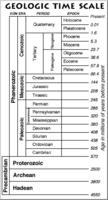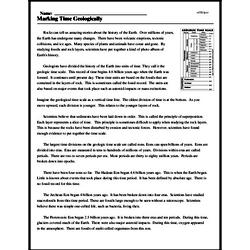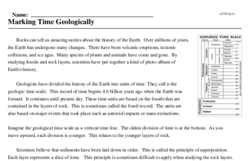Marking Time Geologically
Rocks can tell us amazing stories about the history of the Earth. Over millions of years, the Earth has undergone many changes. There have been volcanic eruptions, tectonic collisions, and ice ages. Many species of plants and animals have come and gone. By studying fossils and rock layers, scientists have put together a kind of photo album of Earth's history.
Geologists have divided the history of the Earth into units of time. They call it the geologic time scale. This record of time begins 4.6 billion years ago when the Earth was formed. It continues until present day. These time units are based on the fossils that are contained in the layers of rock. This is sometimes called the fossil record. The units are also based on major events that took place such as asteroid impacts or mass extinctions.
Imagine the geological time scale as a vertical time line. The oldest division of time is at the bottom. As you move upward, each division is younger. This relates to the younger layers of rock.




